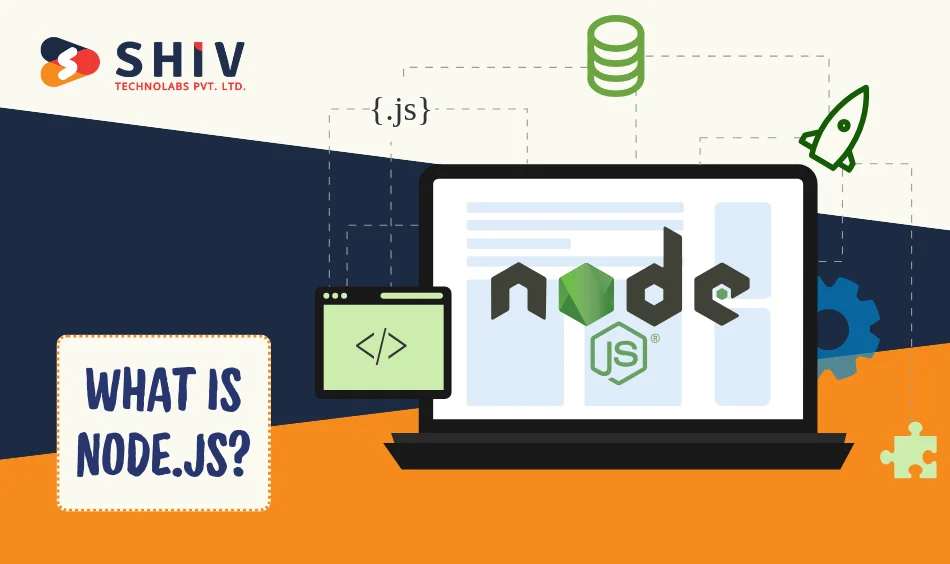Table of Contents
Got an enterprise web app in the works? Getting the backend right is key. You’ve probably heard of Laravel and Node.js – they’re both big players. But they’re not the same. This guide will break down Laravel vs Node.js for enterprise applications so you can pick the one to make your project successful.
What is Laravel?
When you’re building big web apps for businesses, Laravel is a good choice because it makes things organized and secure, thanks to its PHP foundation, which is all about being easy and efficient. Its integrated features handle authentication, routing, and database management seamlessly.
Holding the top position in the PHP framework market with a significant 35.87% share, Laravel is a common and reliable choice for building complex enterprise applications.
# Key Features of Laravel:
- MVC Architecture: Laravel follows the Model-View-Controller pattern, making code organization more straightforward.
- Eloquent ORM: A powerful database management tool that simplifies working with databases.
- Blade Templating Engine: Helps developers create dynamic web pages with minimal effort.
- Artisan CLI: A command-line tool for automating repetitive tasks.
# Pros:
- Strong Security: Built-in protection against SQL injection, CSRF, and XSS attacks.
- Fast Development: Comes with pre-built features like authentication, routing, and database management.
# Cons:
- Slower Performance: Synchronous processing makes it less efficient for high-concurrency applications.
- Limited Scalability: Requires additional tools (e.g., Laravel Octane) for better scalability.
What is Node.js?

Node.js is a JavaScript runtime environment that enables developers to build scalable, high-performance applications. It’s known for handling real-time applications and asynchronous operations efficiently.
Node.js has a market share of 0.89% in the programming-language market. Many businesses hire Node.js developers for enterprise projects because of their ability to handle heavy workloads and multiple concurrent users.
# Key Features of Node.js:
- Non-blocking I/O: Processes multiple requests simultaneously, improving performance.
- Event-driven architecture: Ideal for real-time applications like chat apps, gaming platforms, and live-streaming services.
- Fast execution: Built on Google’s V8 JavaScript engine for high-speed performance.
- Microservices-friendly: Works well in a distributed system where different services communicate.
# Pros:
- High Performance: Asynchronous, non-blocking architecture handles multiple requests simultaneously.
- Scalability: Ideal for microservices and real-time applications like chat apps and IoT.
# Cons:
- Security Risks: Requires manual security implementation, making it more vulnerable if not configured correctly.
- Complexity in Development: Asynchronous programming can be challenging for beginners.
Difference Between Laravel and Node.js
To determine the best backend for an enterprise web application, let’s compare the two based on key factors:
| Feature | Laravel | Node.js |
|---|---|---|
| Technology Type | PHP-based web framework | JavaScript runtime environment |
| Architecture | Synchronous (blocking) – processes one request at a time | Asynchronous (non-blocking) – handles multiple requests simultaneously |
| Performance & Speed | Slower due to synchronous execution, but can be optimized with caching | Faster due to event-driven, non-blocking I/O model |
| Scalability | Moderate scalability; needs additional tools like Laravel Octane for better scaling | Highly scalable; supports microservices and event-driven architecture |
| Security Features | Built-in security for CSRF, SQL Injection, and XSS prevention | Requires manual security setup (e.g., Helmet.js, input validation) |
| Concurrency Handling | Handles requests sequentially; slower for concurrent users | Handles multiple requests at once, making it more efficient for real-time apps |
| Best Use Cases | Enterprise applications, CMS, eCommerce, financial applications | Real-time applications, chat apps, streaming platforms, IoT solutions |
| Development Speed | Faster due to built-in tools like authentication, routing, and database migrations | Can be slower initially, as developers need to set up third-party libraries for similar features |
| Ease of Learning | Easier for developers familiar with PHP; follows MVC structure for better organization | Easier for JavaScript developers but requires knowledge of asynchronous programming |
| Database Support | SQL-based (Relational Databases) – Works best with MySQL, PostgreSQL, SQLite | Supports both SQL & NoSQL – Compatible with MySQL, PostgreSQL, MongoDB |
| Microservices Support | Less flexible for microservices, but can be used with APIs | Highly compatible with microservices architecture |
| API Development | Provides built-in API tools (Laravel API Resources), but not as lightweight as Node.js | Ideal for API-based applications; works well with GraphQL and RESTful APIs |
| Ecosystem & Libraries | Rich ecosystem with official Laravel packages (e.g., Laravel Passport, Sanctum) | Large ecosystem with npm, providing thousands of modules for various functionalities |
| Community Support | Strong community with extensive documentation and PHP developers worldwide | Larger global community due to JavaScript’s widespread use |
| Hosting & Deployment | Can be hosted on shared hosting, VPS, or cloud servers (e.g., AWS, DigitalOcean) | Best deployed on cloud servers (e.g., AWS, Google Cloud, Heroku) |
| Cost of Development | Lower cost due to the wide availability of PHP developers | Can be more expensive as skilled Node.js developers are in high demand |
| Full-Stack Development | Requires separate front-end technology like Vue.js or React | Can be used for full-stack development with frameworks like Express.js |
| Flexibility | More structured; follows the MVC framework strictly | More flexible; allows developers to build applications in various ways |
| Caching Mechanism | Supports caching with Redis and Memcached for performance improvement | Supports caching with Redis, but needs additional configuration |
| SEO & Server-Side Rendering (SSR) | Supports SSR for better SEO in Laravel applications | Works well with SSR frameworks like Next.js for better SEO and performance |
| Code Maintainability | Well-structured code due to the MVC architecture, making it easier to maintain | It can become messy if best practices are not followed, as it offers more flexibility |
| Community & Industry Adoption | Widely used in traditional web applications and enterprise software | Popular for modern web applications, startups, and scalable enterprise systems |
Which One Should You Choose for Enterprise Applications?

| Criteria | Choose Laravel If… | Choose Node.js If… |
|---|---|---|
| Your team is experienced in… | PHP, MySQL, structured frameworks | JavaScript, MongoDB, event-driven programming |
| Your project requires… | High security, structured development, traditional database management | Real-time updates, high performance, scalability |
| Type of enterprise application | CMS, eCommerce, business applications, financial apps | Chat apps, gaming, live-streaming, collaborative tools |
| Budget Considerations | Lower development costs due to PHP’s widespread adoption | Can be more expensive due to demand for Node.js developers |
| Performance Requirements | Speed is not a primary concern; security and structure matter more | Needs to handle thousands of simultaneous connections with low latency |
Which One is the Best Backend for an Enterprise Web Application?
The choice between Laravel vs Node.js for enterprise applications depends on your project requirements.
- If you need high security, structured development, and a traditional database system, Laravel is the better choice.
- If you prioritize speed, scalability, and real-time functionality, Node.js is the way to go.
Many enterprises hire Node.js developers for enterprise projects when they need fast, scalable solutions, while Laravel is preferred for applications requiring strict security and database management.
Conclusion
At Shiv Technolabs, we specialize in enterprise web app development with Laravel and Node.js to deliver high-performance, scalable, and secure solutions. Understanding Node.js vs Laravel security features, we help businesses choose the correct backend for their enterprise applications.























